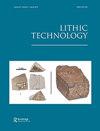“Tip of the Tongue”: Experimental Reconstruction of Handaxes at the Baise Basin (South China) and Implications for Lithic Standardization
IF 1.2
3区 社会学
Q2 ANTHROPOLOGY
引用次数: 1
Abstract
ABSTRACT Geometric morphometric studies in the Baise Basin in South China have documented unique tongue-like tip morphologies in handaxes sampled from the fourth terrace of the Youjiang River Valley. With this study, we report on a new handaxe assemblage found at the Natang site and present data that further document the prevalence of these rounded tip morphologies in the region. We use experimental replications to recreate the unique morphology of the handaxes, and demonstrate that a specific tip rounding strategy was employed by hominins as an economic and effective way to produce wider, more rounded and thinner distal tips. We suggest that these tongue-like tips indicate a predetermined design, and consequently, reflect a level of shape standardization that is heightened in functional tool portions. Moreover, this study provides further documentation of the regionally unique tool-making preferences that Pleistocene hominins employed when flexibly adapting to local environmental conditions and resource availabilities.“舌尖”:中国南方百色盆地手斧的实验重建及其对文学规范化的启示
在中国南方百色盆地的几何形态计量学研究中,从右江流域第四阶地取样的手斧中发现了独特的舌状尖端形态。在这项研究中,我们报告了在纳塘遗址发现的一个新的手斧组合,并提供了进一步证明这些圆形尖端形态在该地区普遍存在的数据。我们使用实验复制来重建手柄的独特形态,并证明了人类采用特定的尖端圆形策略作为一种经济有效的方法来产生更宽,更圆和更薄的远端尖端。我们认为这些舌状的尖端表明了预先确定的设计,因此,反映了在功能工具部分提高的形状标准化水平。此外,该研究还进一步证明了更新世人类在灵活适应当地环境条件和资源可用性时所采用的区域独特的工具制作偏好。
本文章由计算机程序翻译,如有差异,请以英文原文为准。
求助全文
约1分钟内获得全文
求助全文

 求助内容:
求助内容: 应助结果提醒方式:
应助结果提醒方式:


